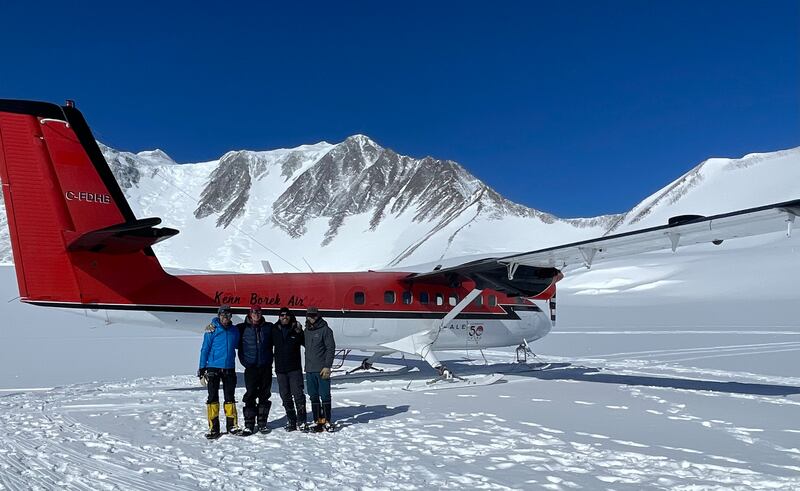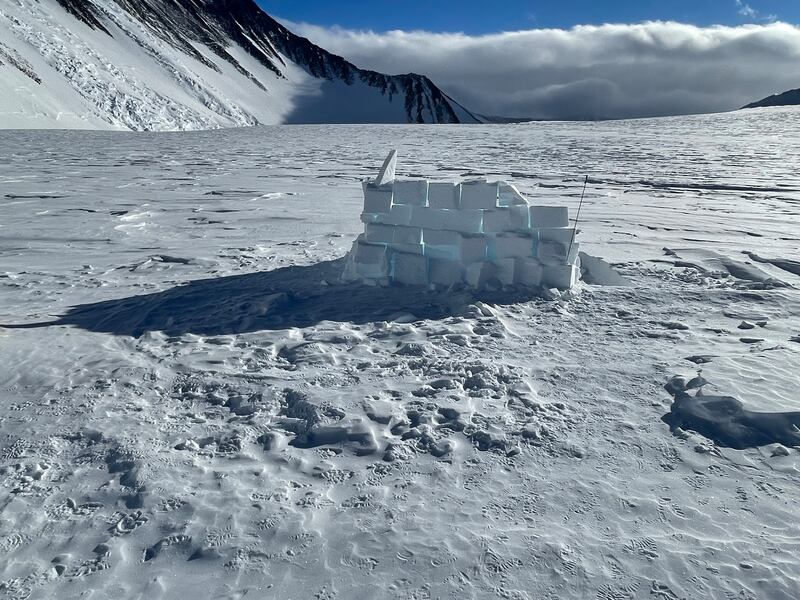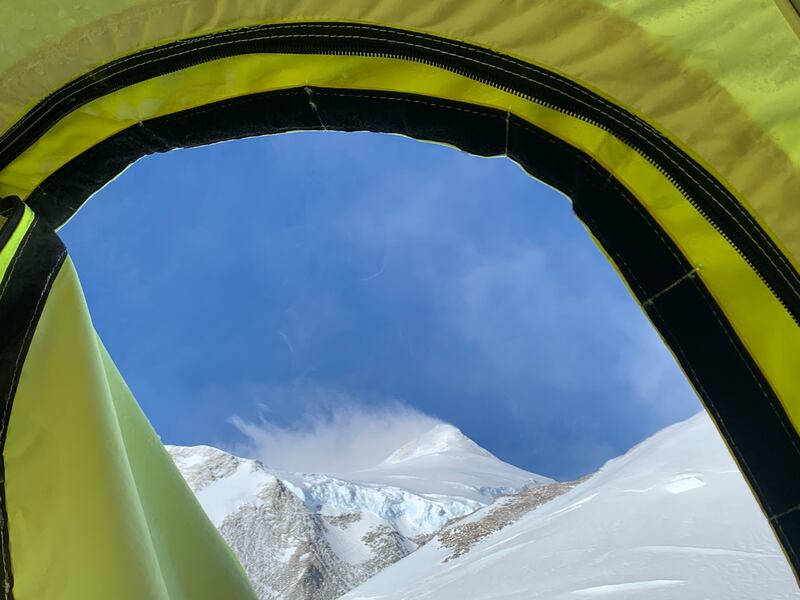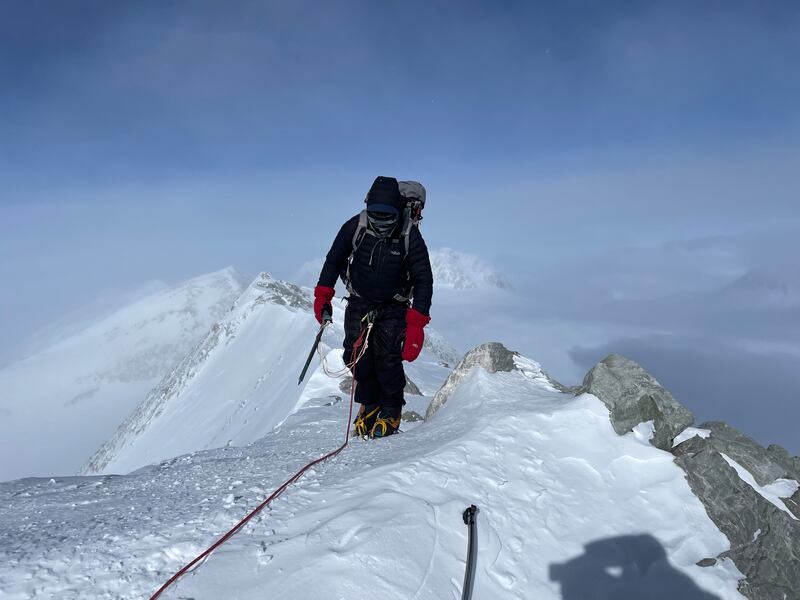Punta Arenas, Chile. November 26th. A message flashed up on WhatsApp. We had a green light to fly. The winds on Union Glacier (UG), Antarctica were expected to drop below 40km/h+ for the first time in days and our Icelandic pilots, in conjunction with the three-strong UG meteorology team, determined it was safe to run the four and a half hour flight from the deep south of Chile. We put down our pints and looked at each other but then concluded we’d watch the end of the Argentina-Mexico game.
We’re climbing Mount Vinson, which at 4,892m is the highest mountain in Antarctica. It will be my sixth summit in the more than decade-long adventure of climbing the highest mountains on each continent. Vinson is not a technical climb, but Antarctica is the coldest, windiest, driest, highest and most isolated continent on earth. It’s the closest we’ll ever get to climbing on another planet.
My last summit was Everest in 2017 during which I wrote a weekly column for The Irish Times. Since then, the joys of marriage and arrival of two wonderful little boys (Eddie Tenzing and Ben Ernest ... yes some inspiration was taken from Himalayan and Antarctic adventurers) combined with the less joyful Covid lockdowns have grounded this next adventure until now.
UG is 3,000km from the Southernmost tip of Chile and about 1,100km from the South Pole. The camp here is operated by Antarctic Logistics and Expeditions LLC (ALE), the principal operator for expeditions on the continent. It only runs for 10 weeks a year, when the Antarctic summer provides a brief window of weather favourable enough to climb its mountain ranges and ski the pole.
The camp is a huge operation with two airfields and 12 planes; it supports film, science, and expeditions across the continent. On our flight we had a well known YouTuber and a Netflix film crew alongside others.

We have 10 experienced climbers in our expedition, including Hoddi from Iceland and Chris Bell from Belfast, who are going to ski kite from the South Pole to Hercules Inlet after the Vinson climb. We also have a Brazilian contingent, including documentarist and filmographer Murilo Vargas and North Face athlete Carlos Santanela alongside businessman and sponsor Decio Gomes.
Although we are in 24-hour daylight, the temperature is constantly changing, driven by wind, cloud cover and mountain shade
The weather was clear when we got off the 757 at UG so we boarded a twin prop Otter fitted with skis straight away for Vinson Base Camp. Before we knew it, we were lying in a tent at 2,140m, over 15,000km from home and getting ready for a first night on the ice.

Although we are in 24-hour daylight, the temperature is constantly changing, driven by wind, cloud cover and mountain shade (Vinson is at 78.3 degrees south latitude so the sun still moves somewhat around the horizon). When the sun goes behind the mountain or clouds the temperature can instantly drop 20 degrees or more. Barometric pressure also decreases at higher latitudes, so the summit of Vinson at 4,892m is at least the same as c5,500m at the equator.
The three-day weather forecast for the mountain was radioed in at 10.30am every morning from the specialist meteorology team at UG. Our team had impressive mountain guides including Rob Smith from Tyrone – one of Ireland’s most accomplished mountaineers with 12 8,000m summits and 20 seasons in the Antarctic. Cody Pitz, an Alaskan in his first Antarctic season, would lead a rope with myself and Tony (UK team member).

We spent the day relaxing at base camp and preparing our gear and sleds for moving up the mountain the next day. It was a bit unusual but from that point onwards the trip was run as four different teams. Each guide would run his rope team, interpret forecasts and make key decisions entirely independently.
The next day we rigged up our sleds and backpacks, roped up and made for low camp at 2,780m. Moving as a rope team is critical given the ever-present risk of large hidden crevasses. We felt strong as we strode into low camp, detached our sleds and helped set up camp. At this time of year, the sun at low camp runs behind the mountains and leaves the camp in shade from 2am to 10.30am each day. While staying there nobody left their sleeping bag before 10.30am – effectively we had just moved time zone!

The weather forecast from that point onwards started to become the centre of attention. Climbing in these uncertain and tough early season weather conditions is what makes this mountain a challenge and our original schedule of four climbing days and five contingency days began to come under pressure.
After three days of waiting at low camp Cody made a call for our team to go for high camp at 3,780m via the 45 degree snow slopes and, after an uncomfortable move up to the top of the fixed lines in swirling winds, we witnessed gusts so strong we’d struggle to stay on our feet as we started over the crest of the hill. We retreated to low camp. The very next day, it was unexpectedly calm and all our teams took advantage to move up in the afternoon.
[ Irish climber Rory McHugh completes summit of Mount EverestOpens in new window ]
The forecasts then showed a major weather system coming in which would bring winds too high to stay on the upper reaches of the mountain (over 100km/h). This left only two potential summit days on this rotation. Most of the team went for the first one but as we had heavily exerted ourselves on two consecutive days, I reluctantly agreed for our team to take a rest day and go for the second. I felt that I had the energy and really didn’t want to risk a worsening weather system but sometimes, on a rope, it’s a team game.

After another heavily interrupted sleep at altitude we woke to an incredibly cold forecast for the summit, -40 to -45 degrees and winds of 30-40km/h. Far from ideal but we would give it our all. We left just after 11am in calm and sunshine but as we got higher the gusts built and a near-whiteout ensued.
I had three balaclavas and each froze solid within minutes of being changed – a pointless exercise. An insulated water bottle froze solid despite having had warm water in it. We kept moving and the winds intensified. Eventually, after nearly 6.5 hours, a steep slope gave way to an awesome summit ridge, which you edge up slowly, staying sure footed here, some gusts testing your balance with steep glaciated slopes on either side.
And then, the clouds cleared and amazing views across the range and out to the sea ice in the distance revealed themselves.

It was incredibly cold and windy so we didn’t stay long. When we got back to camp in just under nine hours we were the last of our teams on the mountain and we collapsed into our tent content with the day.
I had caught some light frostbite on my cheek just below my goggles, an effect called the Everest kiss, but otherwise all good.

The next day we made a quick descent to base camp. We took all our waste with us which added to the backpack weight as we came down through the camps. ALE make a huge effort to keep this environment pristine. At base camp a twin otter was waiting to take us back to Union Glacier.
The first Vinson expedition of the season was over and a success. Back at UG we had our first shower in 10 days and enjoyed some beers and war stories with the rest of the teams.

We eventually made it back to the same bar we were watching the World Cup in two weeks ago. The Brazil-Croatia match has just started but I have to head to the airport and get home.
Six down, one continent to go. Looking forward to the next (and last) one now ...











